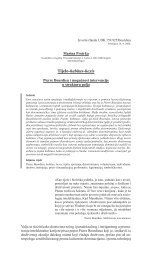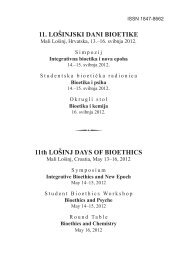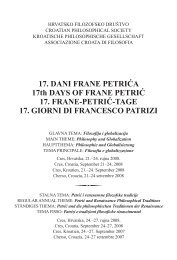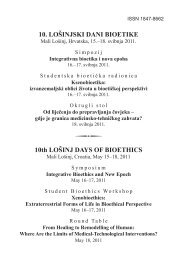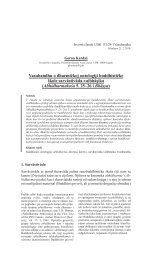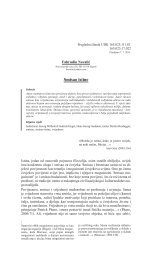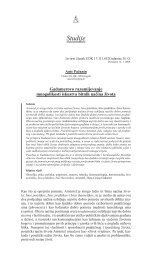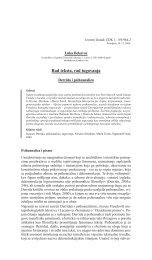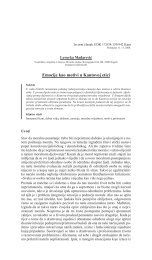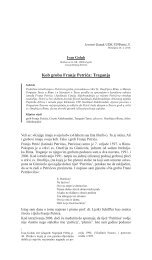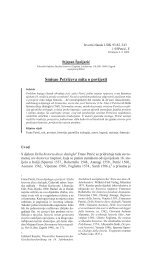Programska knjižica - Hrvatsko filozofsko društvo
Programska knjižica - Hrvatsko filozofsko društvo
Programska knjižica - Hrvatsko filozofsko društvo
Create successful ePaper yourself
Turn your PDF publications into a flip-book with our unique Google optimized e-Paper software.
dowed by various forces at the various distances, by which the molecules are<br />
mutually attracted or repulsed.” (th. XI) But he adopted Bošković’s doctrine<br />
on the attractive and repulsive forces, which are governed by the “unique law<br />
of nature” (th. XII). Following the thirteenth thesis “This law of forces is aptly<br />
shown by a unique continuous curve (curva unica continua),” Biwald made a<br />
most thorough examination of the natural phenomena which prove the action<br />
of the attractive and repulsive forces in nature and the “alternations of forces”<br />
(virium alternationes) from attractive to repulsive and vice versa. Moreover,<br />
he followed Bošković’s thesis on the nature of light (effluvium subtilissimum<br />
corporis lucentis, th. XLII). Next year Biwald reprinted this thesaurus.<br />
In 1766 extensive Assertiones ex physica were printed in Vienna. They<br />
were defended by Baron Joseph Penckler and accompanied the edition of<br />
Bošković’s and Benvenuti’s treatises published under the title Dissertationes<br />
physicae tres. Contrary to the genre standards, the theses were not numbered,<br />
nor was the name of the professor who wrote them explicitly cited. The information<br />
that the thesaurus was defended at the Collegium Regium Theresianum<br />
helps trace the author, as in the period 1763–1773 mathematics and philosophy<br />
were lectured at the Theresianum by no other than Pál Makó.<br />
Assertiones ex physica are divided into fifteen chapters. Bošković’s influence<br />
clearly reverberates as early as the first two chapters. In the first chapter<br />
“De lege virium in natura existentium,” Makó expounded Bošković’s doctrine<br />
on the attractive and repulsive forces, having included a detailed description<br />
of Bošković’s curve of forces. In the last sentence he used for the first time<br />
Bošković’s key term materiae puncta, without formerly introducing it. Until<br />
then he had used the term elementa corporum. In the second chapter “De<br />
praecipuis corporum proprietatibus,” by means of Bošković’s law of forces<br />
the Viennese professor first explained the property of physical bodies which<br />
he termed “solidity or impenetrability, also physically continuous extension”<br />
(soliditas seu impenetrabilitas, extensio item physice continua). In this chapter<br />
he discussed the three general properties of bodies: divisibility, cohesion and<br />
elasticity. In conclusion, Makó pointed to the “variety of particles” (varietas<br />
particularum), which helps the understanding of the chemical changes such as<br />
“fermentations, solutions, precipitations of the bodies” (corporum fermentationes,<br />
solutiones, praecipitationes).<br />
In the seventh chapter “De universali materiae gravitate,” Makó has explained<br />
the force of gravitation in different cases, starting with the simplest,<br />
when the point of matter situated outside the spherical surface acts on the particular<br />
points of that surface. Although still hesitant in the first chapter, here<br />
from the very start he used Bošković’s term punctum materiae. In the eighth<br />
171



